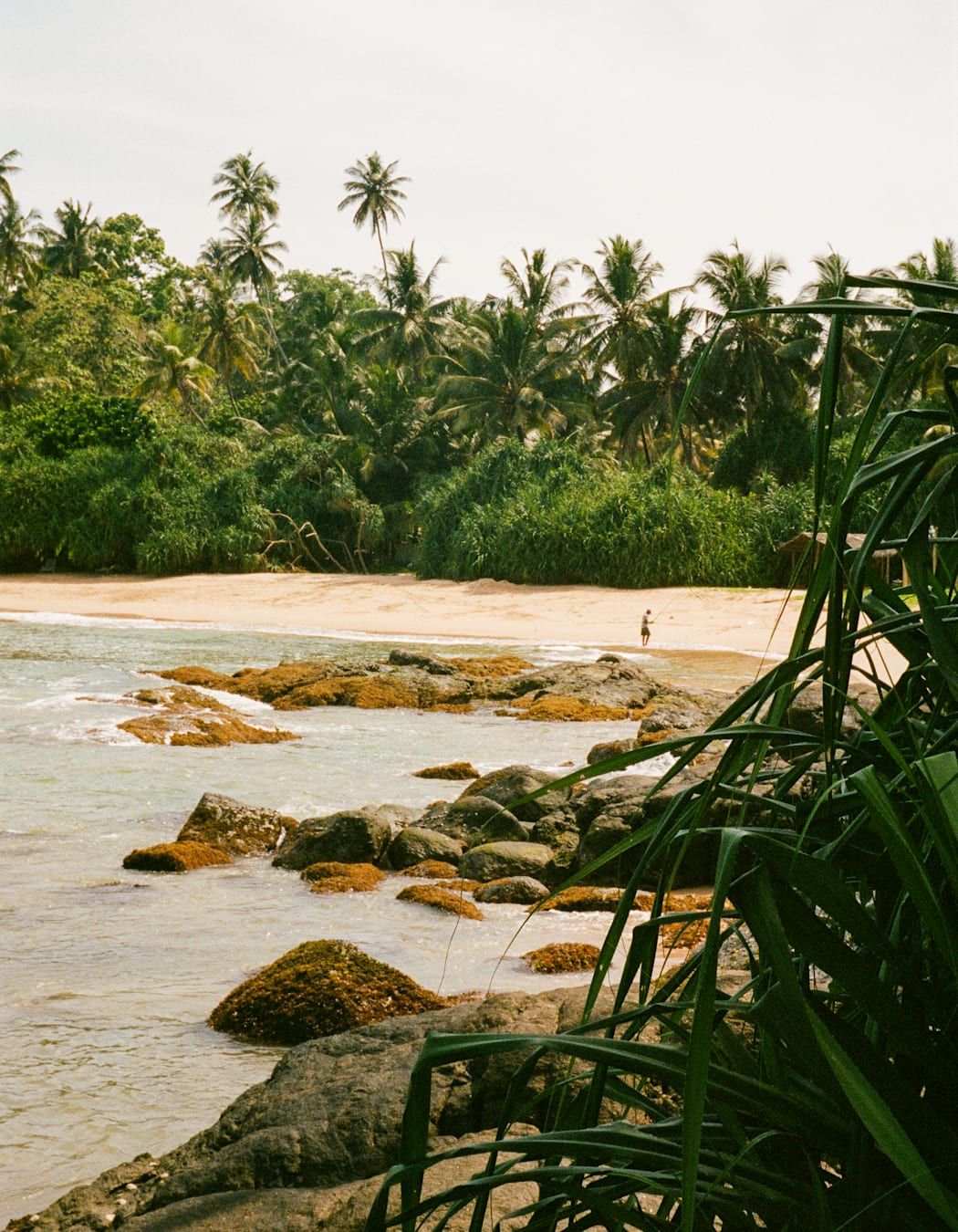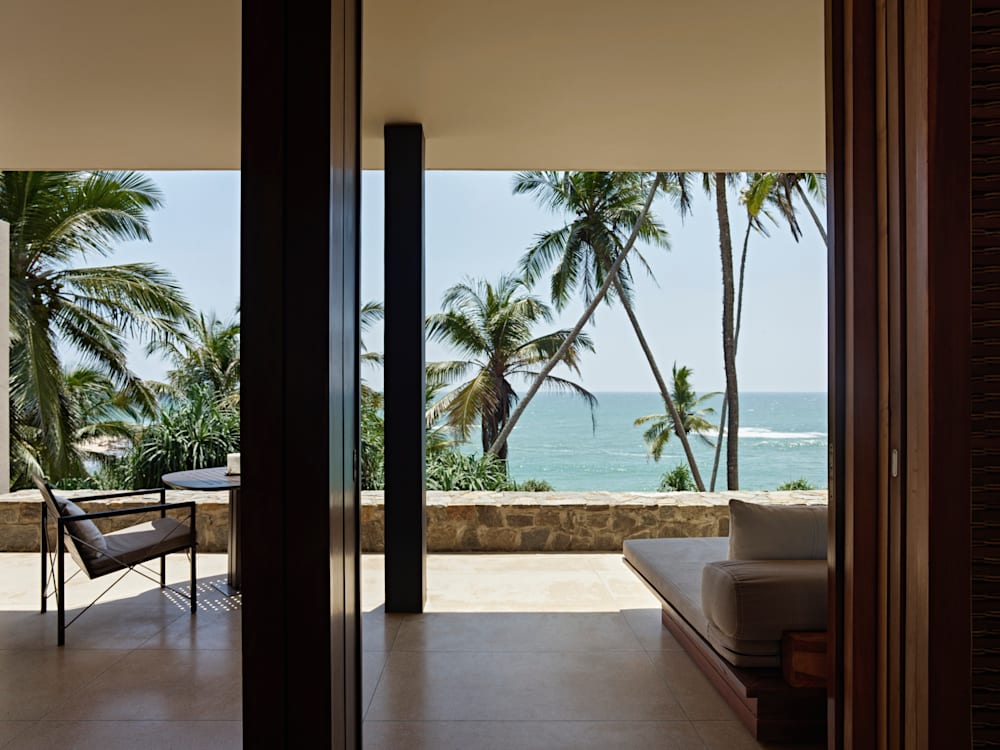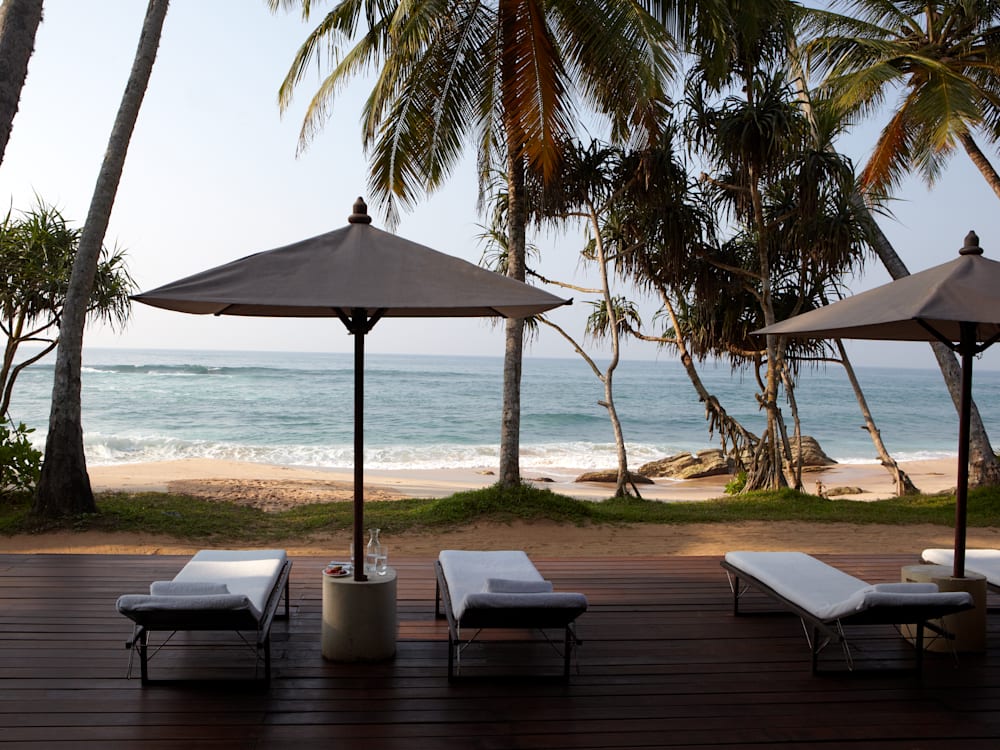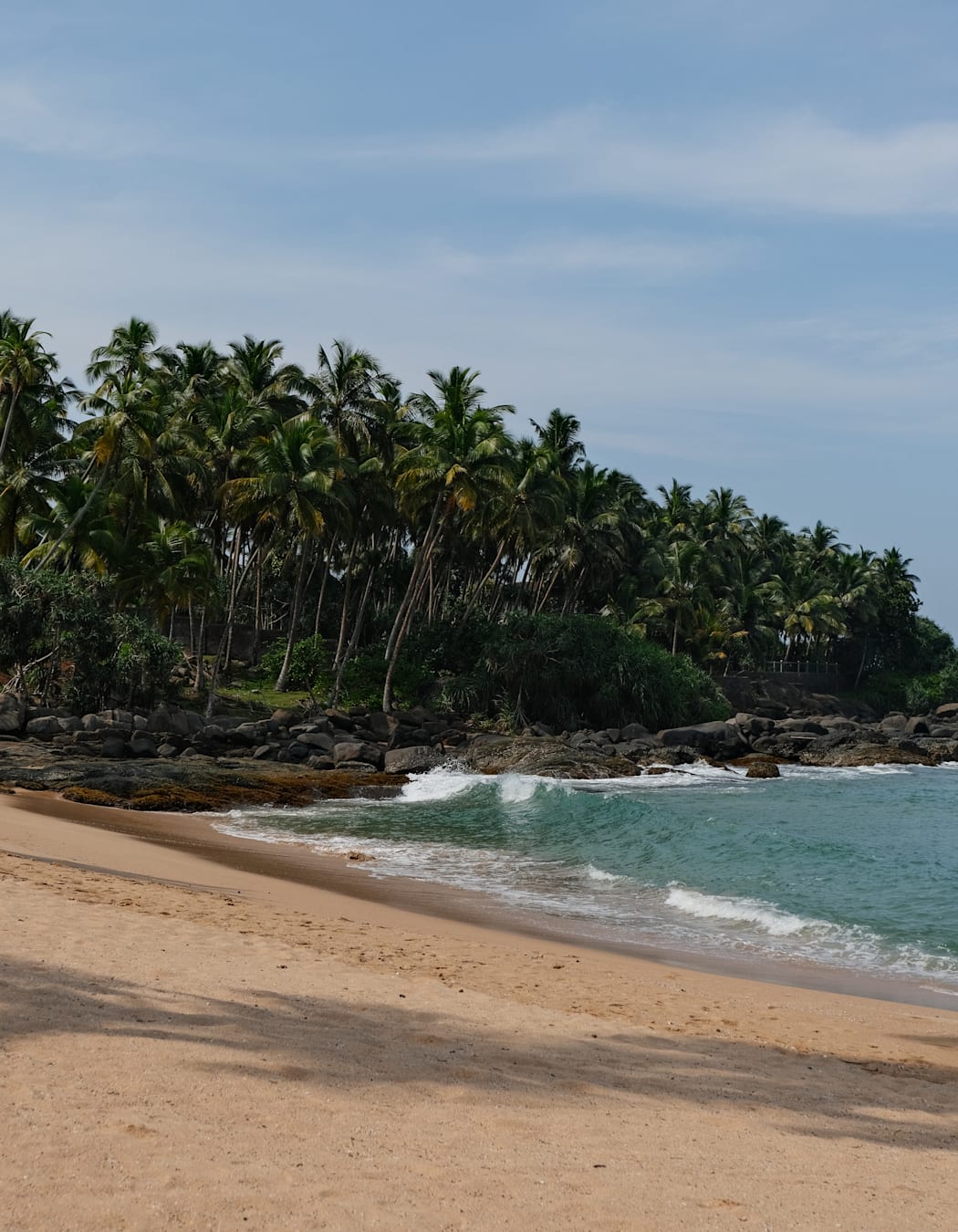Sri Lanka is somewhere people seem to fall in love with. Almost everyone I know who has been has returned at least once, if not multiple times. It’s popular with destination-wedding brides and grooms, honeymooners, surfers, creatives and — maybe most importantly — tea enthusiasts… So, as the latter, I was intrigued to see what the fuss was about.

To fly and flop may top many honeymoon agendas, but allow us to introduce you to another winning combination: fort and beach, possible in Sri Lanka by twinning the two Aman hotels there, which are set along Sri Lanka’s southern shores.
And so to Galle. After a two-hour drive south from the capital Colombo, we entered the fortified walls of a city that has been colonised by various forces over the centuries: the Portuguese were first, then came the Dutch and finally the British. The result, unsurprisingly, is a mismatched array of architecture enclosed by stone sea walls, with a lighthouse at the south-easterly tip. There was something a bit Sylvanian Families about it all: a quaint post office on Pedlar Street, which opened in 1820, the colonnaded Old Dutch Hospital, and the Magistrates Square with a giant banyan tree providing shade to stationary tuk tuks and motorbikes.

It’s in Galle where we enter the colonial mansion in which Amangalla resides, a building that turned a staggering 400 years old this year. Its immaculate exterior belies its approaching-half-a-millennia age. The town itself is hot and sticky, so it’s a welcome relief to cross Amangalla’s veranda and spend some time beneath the ceiling fans. For an added bonus, time your return to coincide with afternoon tea, which is served in the lounge or in-room daily for guests.
To deal with the aforementioned human-melting-point temperatures, Amangalla has the perfect solution: an afternoon spent idle in a billowing cabana beside the pool in the garden, or a trip to one of the self-contained spa suites, which can be booked by guests in half-hour slots. Each has a hydrotherapy pool, an icy plunge, a steam room and a sauna, just in case you’re ready to brave some heat again.

Guests can also seek refuge in the library, where they can learn all about the building’s past life as the New Oriental Hotel — which opened in 1865 and was popular with steamship passengers passing through Galle — and the Dutch family who ran it until Aman acquired it in 2004. Their portraits still line the walls and staff will gladly share tales of the lively matriarch.
It would be the dream setting for a destination wedding, but if you’ve already taken care of the formalities, you can book out the hotel’s rice paddy for some destination dining instead. We’re packed into a tuk tuk and leave the confines of the fort, whizzing past the busy streets of greater Galle as everyone goes about their early evening’s business. At the paddy, the sun is slowly setting as we enjoy drinks and a performance by some traditional dancers, with giant masks, jangling jewels and fire-breathers emerging for the eye-popping finale, before a dinner of delicious rotis and curries.

On our third morning, it’s time to pack up and move to Amanwella, an hour-and-a-half away by car, along the coast near Tangalle. A lot of honeymooners combine Sri Lanka with the Maldives, which is a 90-minute flight south away from Colombo. The Maldives will hold an eternal allure for honeymooners, but personally I would save the hassle of an additional flight and do the flopping component here at Amanwella. You can fill up on culture in Galle or by exploring the relics of the Sinhalese Kingdom (now known as the Cultural Triangle) in Sri Lanka’s north-central plains, then lie back and enjoy the wild, wave-lapped (or more accurately, wave-thrashed) shores of this little corner of paradise.
A 5.30am wake-up call sounds the following day — it’s time for a safari in Udawalawe National Park. Sri Lanka has several national parks, and two of its most famous are roughly equidistant from Amanwella. If you want to be in with a shot of spotting leopards, Yala is your best bet, but Udawalawe is equally enticing, especially if you want to meet some elephants, of which there are many roaming this reserve, which is also home to lots of different species of birds. For an adventure away from dry land, the surfing hotspots of Mirissa Beach and Weligama are both around an hour’s drive west of Amanwella.

The Aman hotels, as is to be expected, have all of the bells and whistles any self-respecting luxury resort requires, but you’re never far from an authentic, more immersive experience, either. As the heat of the day was passing, we convened to visit the Mulgirigala rock temple, a thousand-year-old monastic site on a 210-metre-high rock that peeks out above the forest. The general manager of Amanwella, who hails from Bhutan, said this shrine is a little taster of the famous cliff-edge temples of his motherland. There are hundreds of steps to scale and it does get a little hairy towards the top, at which point I discarded my not-very-sensible choice of footwear and started to scramble. We reached the summit in time for sunset with some rather bold monkeys. After a slightly precarious descent via some even steeper steps, we were greeted by the welcome sight of the Aman team, armed with a spread of tea and cakes.
There is something very gentle about Sri Lanka. A lot can be covered on a honeymoon in 10 days or so, with almost all of the major sights within a few hours’ drive of each other. In addition to Galle and Tangalle, where Amangalla and Amanwella lie, there’s plenty more to see in this teardrop-shaped island: the tea plantations in the central highlands, the Cultural Triangle, the scenic rail journey from the Sacred City of Kandy through the emerald-coloured Hill Country to the small town of Ella, the leopards in Yala National Park… We’ll just have to come back.
NEED TO KNOW

When to go There are two monsoon seasons in Sri Lanka, which means it’s possible to visit year-round, providing you switch location accordingly. Avoid May to August on the west coast, when there’s heavy rainfall — arrive between December and April instead. Over on the east coast, May to October are the optimal months. Broadly speaking, the northern hemisphere summer is a good time to visit Sri Lanka.
Restaurant worth leaving the hotel for Who said restaurants had to be bound by land? The team at Amanwella can arrange sundowners and snacks adrift on a nearby lotus-leaf-lined lagoon in Tangalle. Or you can stick to the shore and head 20 minutes or so south-west of the resort to Mond, which promises expertly mixed cocktails and convivial sharing plates.
Must-have on the itinerary Sri Lanka is one of the world’s foremost tea producers and so it’d be rude not to call in on its elevated, emerald-hued tea country for a brew. Over a pot of Ceylon’s finest, you’ll be able to learn all about the production process and stockpile some leaves while you’re there. Or if you have some suitcase space to fill, take a guided tour around Kandy’s old town and markets.
Best bonding activity It may put your newly minted vows to the test, but climbing Sigiriya, an ancient rock fortress near the town of Dambulla in Sri Lanka’s Central Province, early in the morning is worth setting the alarm for. Or, hike up Pidurangala Rock, opposite, for a view back over Sigiriya instead.
Best views
Along the coast between Amangalla and Amanwella is Lighthouse Ahangama, which has a rooftop bar for an unforgettable sunset overlooking the Indian Ocean. Or if you like your vistas to ideally feature avians, go in search of other loved-up lovebirds on a private raft trip around the coastal lagoons and mangroves of Kalametiya, Sri Lanka’s oldest bird sanctuary, a 40-minute drive north-east from Amanwella.
Time for tea? See more of our Sri Lanka hotel collection
For more postnuptial destination inspiration, head to our honeymoon collection

